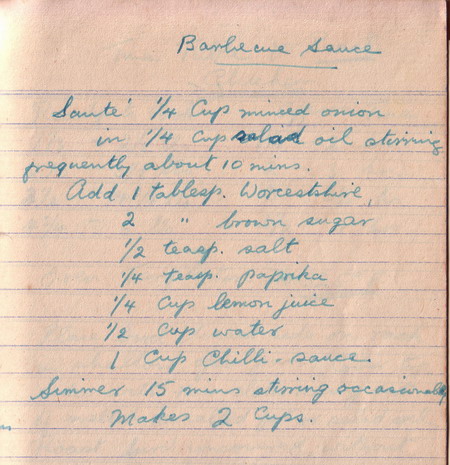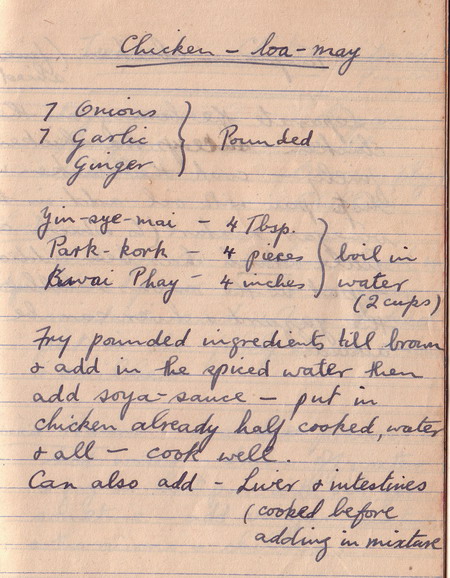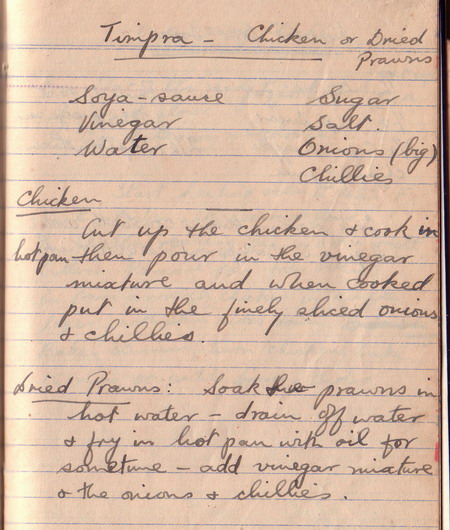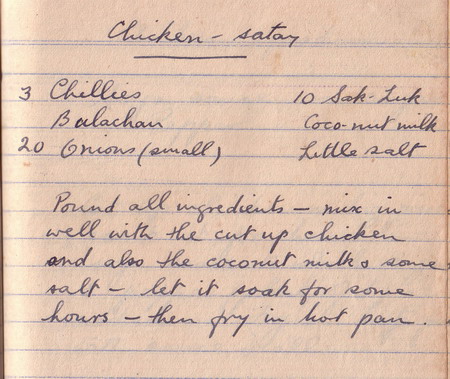This laksa recipe is clearly labelled ‘laksa lemak’, to distinguish it from the completely different dish of Penang laksa. I’ve heard that every region in Malaysia has its own style of making laksa, but still, the basic difference would be whether it has coconut milk (lemak) or is the sourish, fishy version (Penang style, closer to Thai laksa).
Along with poh piah, this is one of my all-time favourite dishes. We still eat it regularly at home.
In the last ten years, my grandmother – always one to keep up with new thinking on healthy eating – replaced the high-cholesterol coconut milk with tinned evaporated milk. It works very well and you don’t actually notice the difference. However, I’ve started reading the labels on tins and found that evaporated milk has a lot of added ingredients which aren’t milk at all! In future, I’d like to try to adapt the family recipe with some other coconut milk replacement instead.
The original recipe also calls for you to make your own fishballs, but I can’t remember my family doing this; we usually just bought ready-made fishballs from the (super)market. These days I myself don’t eat ready-made fishballs or fishcakes because they tend to contain MSG and chemical preservatives.
Another interesting adaptation in my grandmother’s notes is the use of spaghetti instead of laksa noodles (1 box for 7-8 people). The original recipe calls for ‘laksa flour’ which I assume refers to flour to make the noodles, a kind of thick beehoon. As it’s not so easy to get laksa beehoon, spaghetti is the most convenient alternative with a similar shape.
‘Daum Kesum’ is also known as laksa leaf. My dad dislikes the taste of any kind of little leafy garnishings but I believe that laksa just doesn’t taste right without these leaves. ‘Saffron’ is listed here, but as I noted in another posting, I think it really refers to turmeric. You can see in the alternative ingredients/quantities list at the end, it’s called ‘kunyit’, which is turmeric. And don’t forget, ‘D. Prawns’ refers to dried prawns for pounding to make the rempah, whereas the fresh prawns are for eating whole/sliced together with the noodles.
As for the alternative list of quantities (dated 1960) at the end of the recipe, you’ll have to experiment and decide which set of quantities works best for you.











